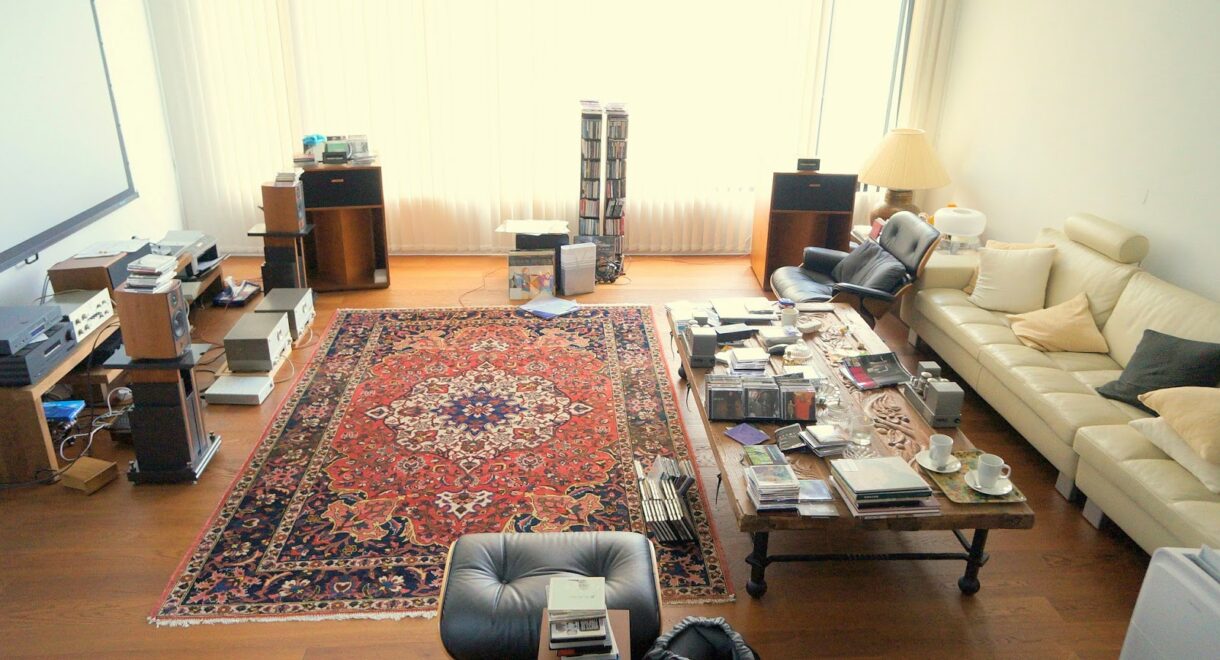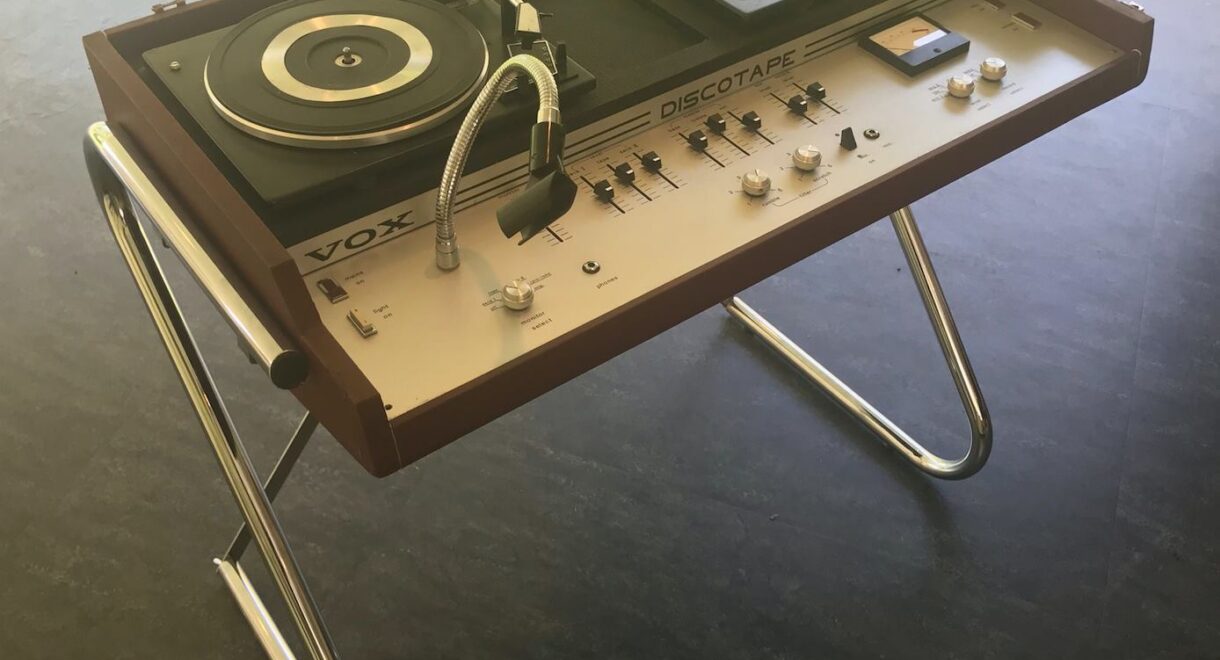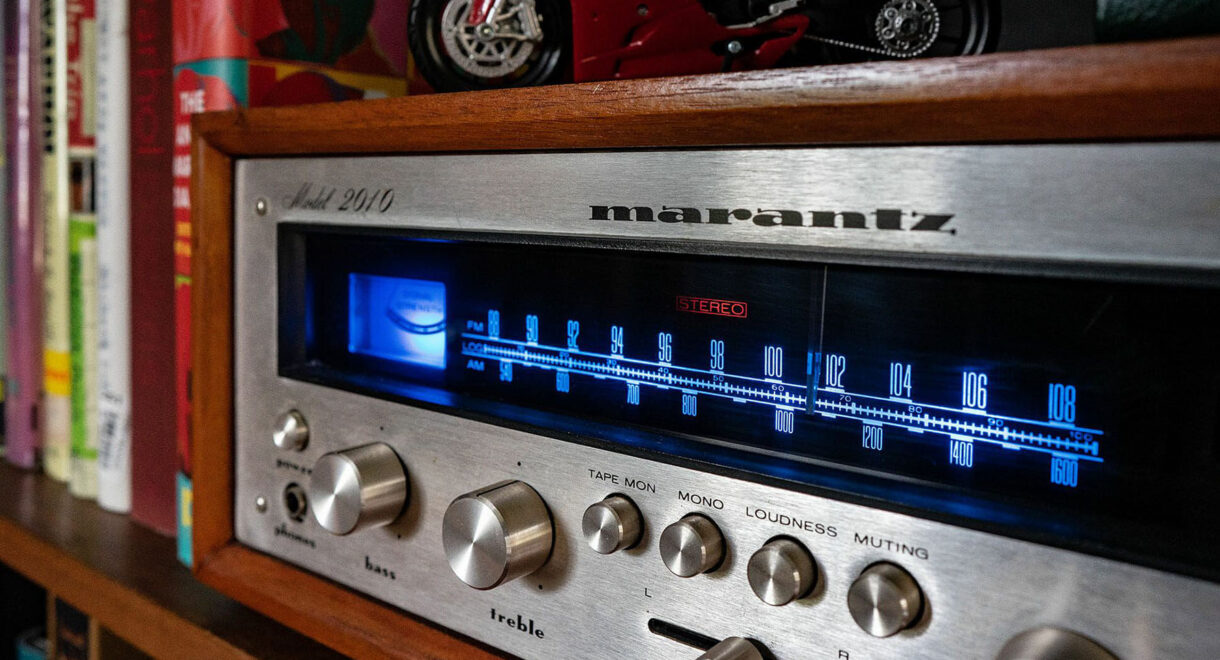Do your new pair of loudspeakers not sound like you envisioned after reading that super positive review? You may have a room acoustics issue. This is a topic […]
Klipsch KLF-30 Speakers: Exit to Vintage Street

Ecoustics’ Eric Pye shares his adventures with the Klipsch KLF-30 speakers.
On March 15th I had the opportunity to hear my second ever pair of Klipsch loudspeakers. In a great example of the virtual becoming reality, an Instagram friend Scott (@scotty_scotchdog, who I had never met in person) invited myself and fellow IG friend Kevin (@mistachen, who I also first met on Instagram and then a couple of times in person), to a Scotch tasting/audio testing party.
Local audio store owner Kurt (@the_audio_room, who I’d met a few times at the store) provided the audio equipment in the form of Hegel and NAD DAC/amplifiers for a head-to-head shootout, with Scott’s Klipsch KLF-30 speakers providing the familiar (to him) sound output.

Scott had found me through my whisky Instagram account, and through that I’d discovered his KLF ownership. Pure #AudioPorn speakers. We had messaged back-and-forth quite a bit, with him asking for Scotch recommendations, and had plenty of discussions about audio components, speakers and music. I was glad to finally meet Scott, and see Kevin and Kurt again, but part of me was just there to finally hear the Klipsch KLF-30 speakers.
I’d been curious about Klipsch, and particularly the popular, retro-styled “Heritage” Series (Heresy, Forte, Cornwall, La Scala and Klipschorn) since getting into vintage audio. The first and only Klipsch I had heard up to that point were the Quartets (1989-96), which I had owned for a little over a year. Though not officially Heritage speakers, they were a fit looks-wise; like a big Heresy with deeper bass (10” woofer and 12” rear passive, as opposed to the Heresy’s 12” woofer).

I loved the look of the Quartets, but never could get them to sound right with the equipment I had at the time. They were good with jazz, chamber music, acoustic – anything detailed and textured, without too much going on – but with louder, more complex rock or orchestral music, output lost cohesion and came across as dry and harsh. I raised them, adjusted toe-in, moved them closer to the rear wall and then farther out, changed my seating position; no matter what I did, there was something off.
I had not purchased a tube amp yet (Klipsch and tubes are a heaven-made match, but my Dynaco ST-70 was still a year in the future), but in retrospect feel that could have been an answer.
Scott’s KLFs were a different story. Whether with Hegel or NAD, they sounded big, and there was an abundance of bass. I’m not a bass-head, but I do like a solid low end and the KLF-30 had it in spades. There was also a good balance between bass, midrange and treble that was true no matter what we listened to. They sounded cohesive and I loved them.
A mind expanded by a new experience can never go back to its old dimensions.
The sad thing about an experience like the evening at Scott’s is that I had a new audio benchmark, and I spent the next few weeks comparing the sound of my own speakers to that. My dissatisfaction with the Quartets only grew. I let Scott know that if he ever decided to get rid of his KLFs, I wanted first dibs. He told me it was unlikely, but that yes, I’d be first in line.

Not only do the Klipsch KLF-30 sound big; they are big, standing 115cm tall (45”) and weighing a burly 46.3kg (102 lbs). Part of the Legend Series (30, 20, 10 and C7 centre) introduced in 1996 and manufactured until 2001, the Klipsch KLF-30 feature a three-way driver system with 1” K-79 tweeter compression driver (with 90˚ x 40˚ exponential horn), 1.5” K-52 midrange compression driver (with 90˚ x 60˚ Tractrix Horn®) and two 12” K-31 woofers (with oversize magnet structure).
Frequency response is a very decent 36Hz to 20 kHz, and sensitivity is (rated) 102 dB @ 1 watt/1 meter, and nominal impedance is 8 ohms. On paper, a speaker which will play well with anything.

I got it in my mind that I should get something tall with a big box like the KLFs. If I couldn’t have the real thing, I wanted something close. Soon after the mind-expanding evening, I found a set of ESS PS4As advertised on Kijiji (Canada’s Craigslist). Double 10” woofers (one active, one passive) and small Heil AMT (Air Motion Transformer) ribbon tweeter.
Not as big box-wise as the KLF-30s, but still on the larger side at 99cm tall (39”). Rated similarly at 35Hz to 24kHz, and sensitivity of 96 dB @ 1 watt/3 feet and a 6 ohms impedance.

I tried them out and liked what I heard (not as big sounding as the KLFs, but adequate levels of bass, great balance and sweet midrange and highs). They came home with me, and the Quartets were quickly sold on. Ironically, they guy who bought the Quartets brought over an old Marantz 2230 receiver to test them with, and the Quartets never sounded better to my ears. Goes to show the importance of synergy.
A bit over a year on and a few months into the pandemic, Scott messaged me. “Do you still want my KLFs?” He was taking the plunge on some Tannoy loudspeakers and the Klipsch KLF-30 speakers were now surplus to requirements. Did I still want the KLFs? I was mighty happy with my ESS, but dammit yes, I wanted these legends. A deal was struck, and a few days later Scott and I lugged two 102 lb monsters down into my basement and they were mine. All mine.

My Precious
And now, a year on, what do I think? Do the Klipsch KLF-30 speakers play well with everything? I would have to say yes. I’ve run them in all kinds of set-ups and combinations; and while they do sound different, they always sound good. Very good.
With the diminutive Sansui AU-555, rated at 20 watts/channel and damping factor (control over the movement of the speaker cone, particularly in the bass region) set to high (45), the sound is big and beefy. This is with the volume pot set to somewhere between 2 and 3. Bass is solid with good slam and control.
The midrange and highs are detailed, and extension is excellent. Overall tonal balance is spot on, and I’d be happy enough with this combination if it was the only system available to me. Proof that an efficient speaker with a low-powered amp can work extremely well, with no compromise to sound quality.

With the bigger Sansui AU-999, rated at 50 watts/channel and a damping factor of 45, output is similar. A bit cleaner and leaner, with less beef. More refined and “audiophile.” Many 999 owners lament (somewhat) a lack of bass punch and here that reputation is born out; this is no fault of the KLF-30. That said, this combination is still very satisfying and extremely musical.
Throw the 35 watts/channel Dynaco ST-70 tube power amp into the mix with the AU-999 operating in preamp mode, and magic starts to happen. The Dynaco adds warmth, and a pinch more low end than the 999 alone. Bass is thick without being flabby, with impactful dynamics and speed (there’s thwack to the attack). Midrange and treble are well defined and balanced, neither recessed nor forward. The Klipsch-plus-tubes adage is very, very true and the result is something I could listen to ‘til the cows come home. Wonderfully balanced with just the right amount of presence and size.

The one KLF-30 spec that I have yet to mention is output power; nominal 200 watts and maximum 800 watts each. These things can handle a lot of juice. So, out of curiosity, we replace the Sansui/Dynaco pairing with a NAD solid state combo of 3020 (as pre-amp) and a 150 watts/channel 2600 power amp. Damping factor of 100. For bass-heads, this is where you want to be. Attack and decay of the low end are incredibly defined; there’s thunder with no flab at all. The midrange and treble are still very balanced sounding but more dynamic and engaging. Not something I do much, but volume can be turned way up, and the speakers maintain composure. Efficient yes, but also very muscular.

Suffice it to say, I am 100% satisfied with the Klipsch KLF-30 speakers. Actually — 99.9%. Every now and then, the vintage-purist, OCD part of my brain whispers, “1996 is not vintage; your speakers are too new!” Many define vintage audio as being manufactured pre-1985 (while in the automobile world anything older than 25 years is vintage). If the KLF-30s were cars, the first ones off the line would now just fall in the vintage category. As audio equipment, they’re a decade too late.
What to do? What to do? Perhaps a set of 2nd generation Fortes or Cornwalls are in my future. Probably Cornwalls…










